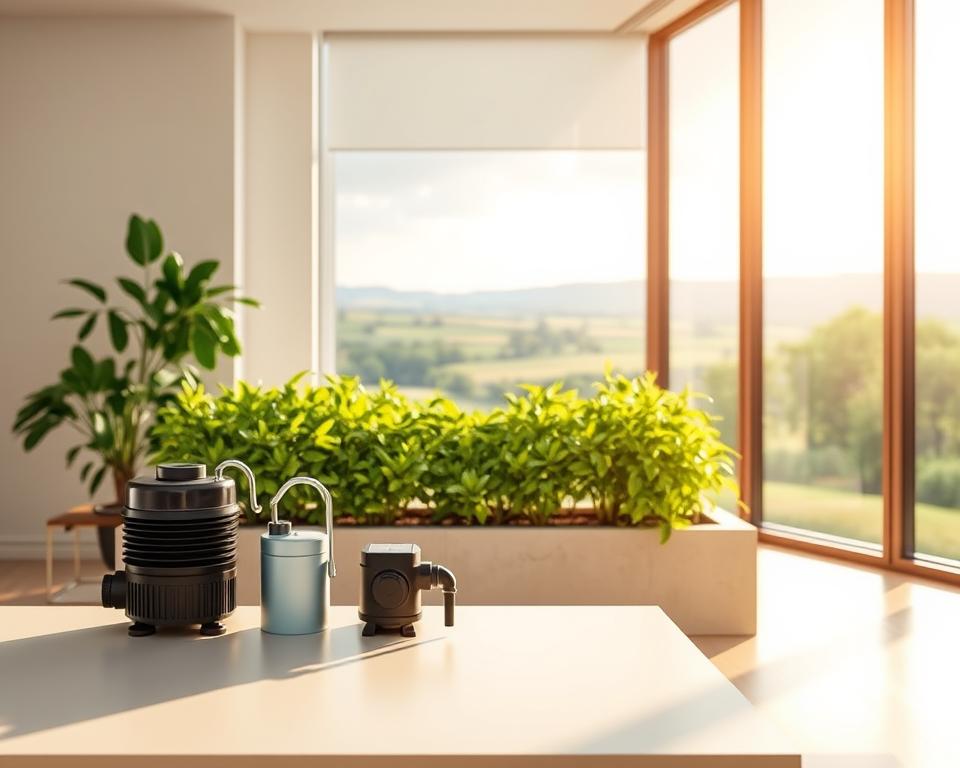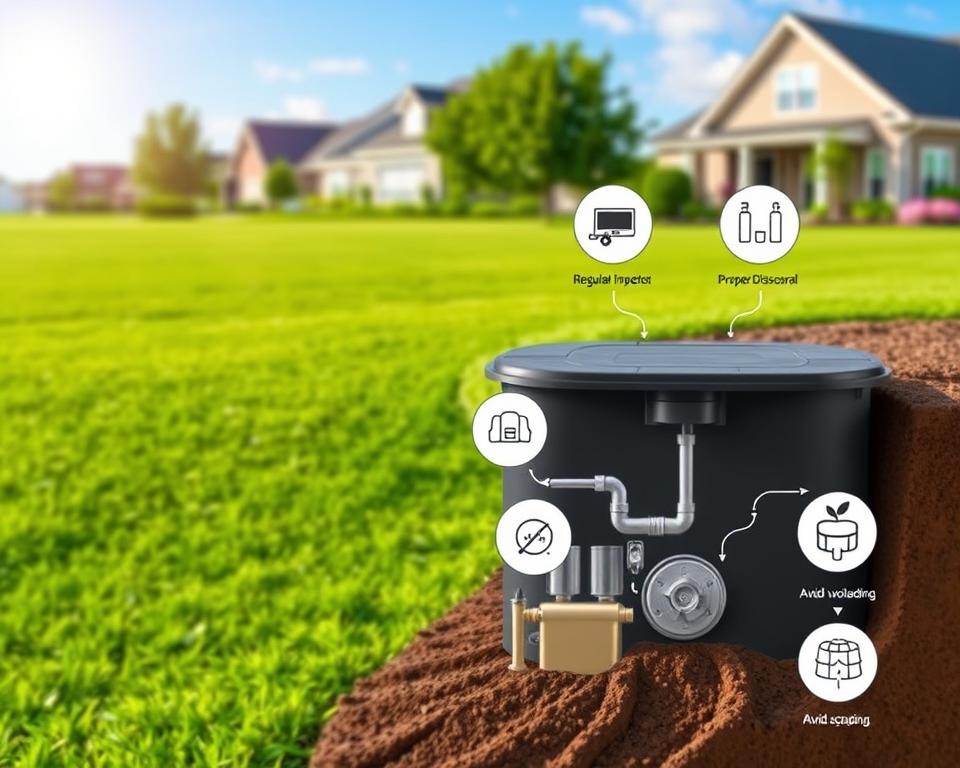The Eco-Conscious Person’s Guide to Grey Water Pumps
Have you ever thought about the amount of water you let go unused daily? It’s vital for those who aim to live sustainably. Grey water comes from our sinks, showers, and laundry. If managed well, it becomes a precious asset. In this guide, we explore how a grey water pump can enhance water efficiency and support sustainable living. By utilizing greywater, you not only lessen your impact on the environment but also see savings on your water bills. Let’s discover how effective portable RV waste pump management can benefit you!

Grasping Greywater and Why It Matters
Greywater comes from everyday activities like dishwashing, showering, and laundry. It’s essential in sustainable water management, acting as a renewable resource. This resource significantly improves water efficiency.
It’s critically important for reducing our dependence on freshwater supplies that are becoming more limited. Recycling greywater allows homes to reduce their utility costs and save water. This achieves environmental benefits and fosters a green living mentality.
Adopting greywater systems aids in sustainable water use and recycles water effectively. By treating and reusing greywater for irrigation and toilet flushing, homeowners can meet their conservation goals. This practice underlines a commitment to eco-conscious water management.
What is a Grey Water Pump?
This type of pump is specifically designed to handle water that has been recycled. The pump takes water from where it’s collected and moves it to places for reuse. This pump’s role is important in water recycling processes. It’s pivotal for sustainable water use, transferring greywater for irrigation, flushing, and more.
The grey water pump operates through suction and pressure to move water. The pump is built to be durable, allowing it to manage minor debris and prevent clogs. These pumps make recycling water efficient. They play a key part in saving clean water resources.
Benefits of Using a Grey Water Pump
There are numerous perks for environmentally conscious individuals who use grey water pumps at home. One major advantage of grey water pumps lies in their capability to better manage water flow. These systems cleverly repurpose water from domestic activities, such as showering and washing, for reuse in activities like irrigation or toilet flushing.
Adopting such systems underscores a deep commitment to sustainable living by notably reducing the demand for fresh water. Homeowners observe significant water conservation benefits. They enjoy lower utility bills and a substantial cut in their water usage. The consistent recycling of water also diminishes our environmental impact.
Besides conserving water, grey water system pump benefits also lead to stronger gardens. They ensure gardens or landscapes receive a consistent supply of water, thus preventing drought stress. This practice encourages robust plant growth and champions a greener approach to gardening and landscaping.
Different Kinds of Grey Water Pumps
The correct grey water pump must be chosen. There are several types to consider: submersible, external, centrifugal, and multi-stage pumps. Each type boasts distinctive features and benefits for various applications.
Working under water, submersible pumps are perfectly suited for drawing water from tanks or wells. They tend to be efficient and quieter, as they’re submerged. External pumps, however, work when placed outside the water container. They’re simpler to install and are favored for scenarios needing easy pump access.
Using a spinning impeller is how centrifugal pumps move water. This makes them reliable and suitable for a wide range of uses. Multi-stage pumps, which are great for moving water to higher elevations, employ multiple impellers to produce increased pressure.
Below is a comparison table highlighting the features of these common types of grey water pumps:
To select the most appropriate pump, it’s essential to understand these different types. It ensures improved efficiency and performance in managing greywater systems.
Selecting the Best Grey Water Pump for Your Needs
Choosing the right grey water pump is vital for effective greywater recycling. The size of your greywater system is a crucial factor to consider when selecting a pump, as different scales need different capacities. You need to know the necessary flow rates to be able to select the ideal pump for your needs.
It’s essential to consider how energy efficient a grey water pump is when making your choice. You can save money on your utility bills and still get good performance by choosing models that don’t use a lot of energy. Look for pumps with top efficiency ratings and low energy consumption to support sustainability.
You also need to think about whether the pump will work well with your filtration system. For preventing clogs and maintaining water quality, the right pump should integrate smoothly with your existing filters. Keeping these points in mind will guide you to the best pump for your grey water system.
How to Install a Grey Water Pump
To install a grey water pump, you first need to identify where the greywater comes from in your house, such as sinks and showers. It’s important to pick the right spot for your system. A place that’s easy to get to will make maintenance simpler and the system more efficient.
Consult a grey water system installation guide after you’ve decided on a location. This guide will list the tools and materials needed. You will need to:
Knowing the local regulations is crucial if you plan to install the system yourself. This makes sure your system is legal and avoids problems later. Following the recommended practices improves your system’s performance and lifespan.
Grey Water Pump Maintenance Tips
It’s very important to maintain your grey water pump regularly so it stays in good working order. Proper care will help conserve water and extend the lifespan of your pump. Here are essential maintenance tips:
By integrating these practices into your routine, you can avoid blockages and ensure peak pump performance. For your grey water pump maintenance to be effective, you need to pay attention to these aspects.
These guidelines will help you make sure your grey water pump maintenance is effective. This approach boosts your system’s efficiency and effectiveness.
Understanding the Costs of Grey Water Pumps
You need to carefully consider the costs when you’re thinking about investing in grey water pumps. Prices vary due to brand, features, and specifications. Homeowners might spend $200 to $1,500 on a pump, depending on its attributes.
Don’t forget to include installation fees when calculating the total cost of grey water systems. Expect to pay an extra $300 to $1,000 for professional installation. These expenses are crucial to consider along with the pump’s cost to fully understand the affordability of grey water solutions.
When you’re making your budget, you need to consider how much energy the pump will use. Many grey water pumps are designed for efficiency, minimizing additional costs on utility bills. If you use these systems, you’ll likely use less water, which can save you a lot of money over time. Despite the initial cost, the financial benefits of grey water systems are compelling over time.
A crucial step in sustainable living is adopting a grey water pump. It lets homeowners save water and cut utility bills. This not just benefits your home but aids the environment too. Grey water recycling is a step forward in conservation.
Selecting and maintaining a grey water system may initially seem tough. Yet, the benefits for sustainable living are worth the effort. These systems enhance your property’s value and encourage wise water use.
Grey water systems are not only good for saving money; they’re essential for living in an environmentally friendly way. The choices we make today shape a sustainable tomorrow. By embracing these practices, you contribute to a healthier planet.


